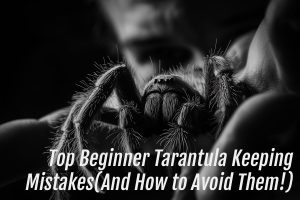The Top 5 Strange Arachnids: Discovering Nature’s Most Curious Creatures
Introduction
Arachnids, a diverse group of eight-legged creatures, never fail to amaze us with their unique adaptations and intriguing behaviors. While most people are familiar with spiders and scorpions, there exists a remarkable variety of lesser-known arachnids that are equally captivating. In this blog post, we will delve into the realm of the peculiar and unveil the top 5 strange arachnids that will leave you awestruck.
Tailless Whip Scorpion (Amblypygi)
The Amblypygi, commonly known as tailless whip scorpions, are arachnids with a striking appearance. Despite their scorpion-like appearance, they are harmless to humans. These fascinating creatures are nocturnal hunters, inhabiting tropical and subtropical regions worldwide. What sets them apart is their sensory organs located on their pedipalps, which help them detect prey and navigate their surroundings with precision. They use their long whip-like appendages to capture insects and small invertebrates. Contrary to popular belief, tailless whip scorpions do not produce venom or silk, making them unique among arachnids. Fun fact: they are known for their maternal care, with the female carrying her eggs on her back until they hatch.
Despite their fearsome appearance, whip scorpions are harmless to humans. Their elongated front legs, or antenniform legs, serve as sensory organs, helping them navigate their surroundings and detect prey or potential threats. These unique legs are highly sensitive to vibrations and chemical signals in the environment, providing them with a keen sense of their surroundings.
Whip scorpions are skilled hunters, preying on insects, spiders, and other small invertebrates. They use their powerful pedipalps to capture and immobilize their prey before consuming it. Mating rituals among whip scorpions are equally fascinating. The male constructs a sperm packet, which he transfers to his pedipalps. He then approaches the female, gripping her with his specialized appendages and transferring the sperm packet for fertilization.
Ogre-Faced Spider (Deinopidae)
The Ogre-Faced Spider, belonging to the Deinopidae family, is a master of disguise and an exceptional ambush predator. Found in tropical regions, these spiders have evolved a specialized hunting strategy involving a unique web formation known as “net-casting.” By holding a small, round web between their front legs, they throw it onto unsuspecting prey, ensnaring them with incredible accuracy. Their exceptional eyesight allows them to detect movement even in low-light conditions. Furthermore, they produce a special kind of silk that enhances the stickiness of their webs. The Ogre-Faced Spider’s lifestyle is indeed remarkable, as they construct a new web each night. It’s an astonishing sight to witness these incredible arachnids in action, displaying their unparalleled hunting skills.
Vinegaroon (Thelyphonida)
The Vinegaroon, also known as whip scorpions, may appear menacing due to their fearsome appearance, but they are relatively harmless to humans. Found in warm and tropical regions, they possess a unique defense mechanism – the ability to spray acetic acid (similar to vinegar) from their abdomens. This acrid liquid acts as a deterrent against predators. Despite their fearsome look, vinegaroons are mainly nocturnal scavengers, feeding on insects, spiders, and other arthropods. These arachnids exhibit intriguing reproductive behaviors as well. The male vinegaroon constructs a silk sperm web, which he then fills with his sperm. He transfers the sperm to small capsules, which the female collects and inserts into her reproductive organs when mating.
Tailor Ant-Mimic Spider (Mimetus spp.)
The Tailor Ant-Mimic Spider is a true master of deception, with its remarkable ability to mimic ants. Found in various parts of the world, these spiders have evolved to resemble ants in appearance and behavior, fooling both predators and potential prey. By mimicking ants, they can get closer to their own prey without raising suspicion. These clever arachnids often display ant-like movements and even produce chemical signals similar to those emitted by ants, further enhancing their disguise. The Tailor Ant-Mimic Spider preys on small insects and spiders, taking advantage of their ant-mimicking strategy.
Interestingly, mimicry goes beyond physical appearance. Tailor Ant-Mimic Spiders have adapted their hunting techniques to imitate the foraging behavior of ants. They strategically move and pause in a manner that resembles ant foraging trails, allowing them to get closer to unsuspecting prey. This mimicry not only provides camouflage but also allows them to exploit the resources and protection that ants enjoy within their communities.
Evolutionary advantages are evident in the success of this mimicry strategy. By mimicking ants, these spiders gain protection from potential predators that would avoid confrontations with ants due to their aggressive nature and collective defense mechanisms. Additionally, they can access abundant food sources that are typically associated with ant trials.
Solfugid (Solifugae)
The Solifugid, commonly known as a sun spider or camel spider, is a fascinating arachnid that never fails to captivate with its extraordinary features and behaviors. Found in arid regions around the world, this agile predator possesses an intimidating appearance with its large chelicerae and swift movements. Despite its fearsome look, the Solifugid is harmless to humans, but its adaptations make it a true marvel of nature. With its unique body structure, including a distinct head region, called the prosoma, and strong legs, the Solifugid is built for speed and agility. It can move with remarkable swiftness, enabling it to chase down prey with ease.
As a pursuit predator, the Solifugid primarily feeds on insects, spiders, and small vertebrates. Its hunting techniques involve ambushing and overpowering its prey using its powerful chelicerae, delivering biting and tearing actions to immobilize its victims. Living in arid environments poses challenges, but the Solifugid has evolved remarkable adaptations to thrive in such conditions. Its body is covered in sensory hairs, aiding in navigation and prey detection. Additionally, it possesses unique respiratory structures that minimize water loss, enabling survival in extremely dry climates. While Solifugids may elicit trepidation, they play an important role in maintaining ecological balance. Their presence in arid ecosystems helps control insect populations, contributing to the overall health of these delicate habitats. The Solifugid serves as a testament to the marvels of natural adaptation and showcases the incredible diversity of arachnids that inhabit our planet.
Conclusion
Exploring the world of strange arachnids reveals the incredible diversity and complexity of nature. From tailless whip scorpions and ogre-faced spiders to vinegaroons, tailor ant-mimic spiders, and whip spiders, these lesser-known arachnids present a captivating array of adaptations and behaviors. By shedding light on these peculiar creatures, we gain a deeper appreciation for the wonders of the natural world. These arachnids serve as a reminder that even within a familiar group like arachnids, there are countless surprises waiting to be discovered. So, embrace the strange and marvel at the incredible adaptations of these peculiar arachnids.
Other Helpful Info!
If you found this post helpful, please consider sharing it. It really helps the site in the search algorithm! Thanks!
Do you have inverts and arachnids? Want a fun way of tracking them? Then download Arachnifiles for Android or iOS today! It’s free!
Want to read more helpful blog posts? Click here to view other blog posts!
Want to read more about invertebrate care? Click here to view other care guides!




